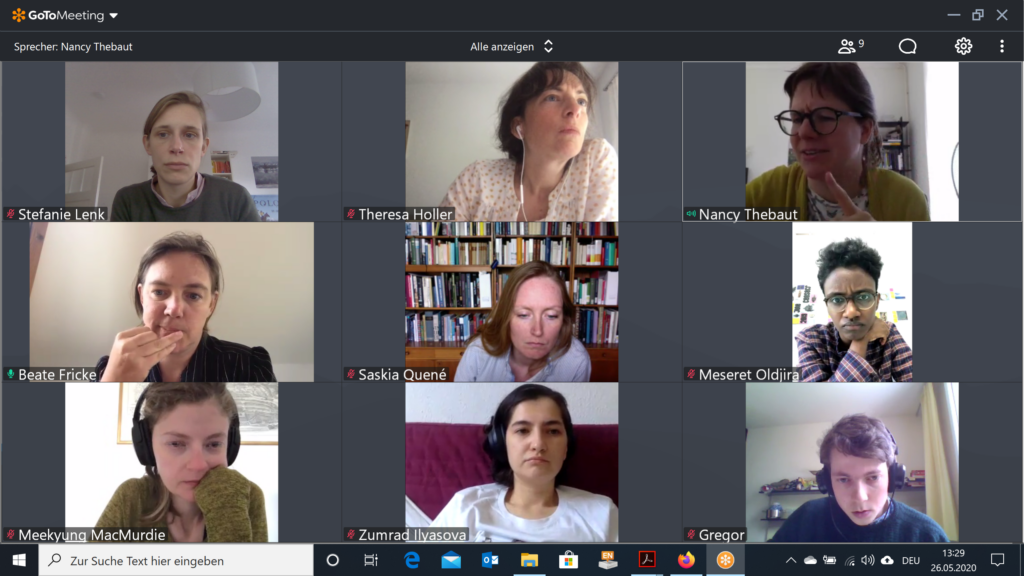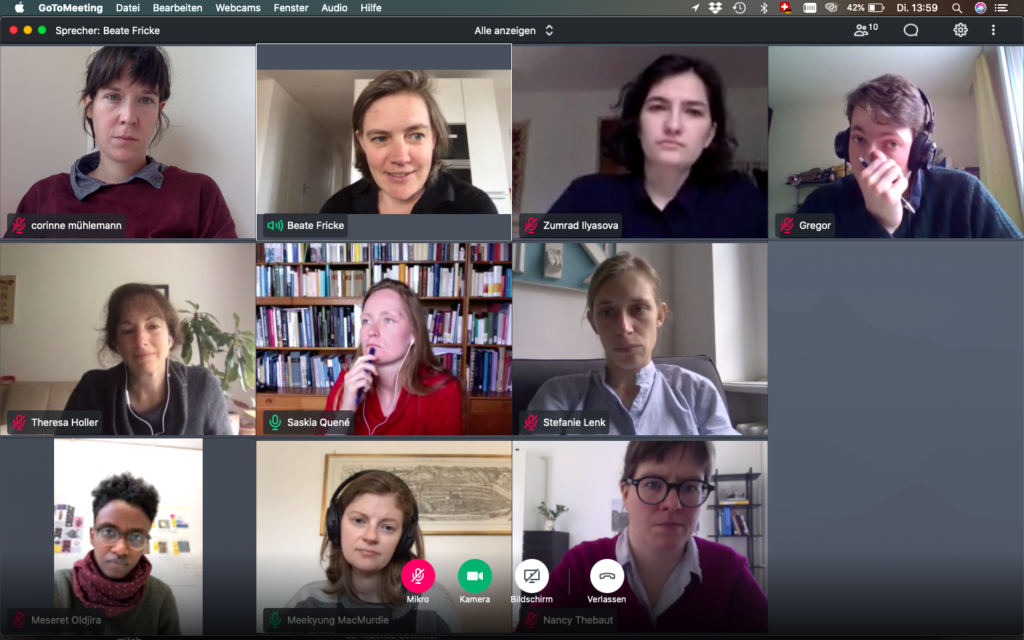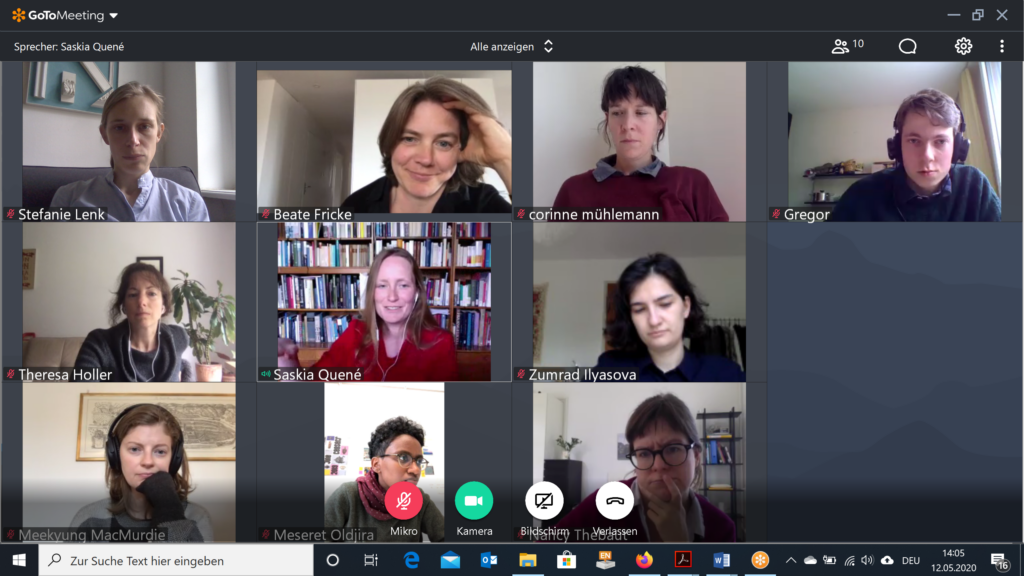The time since early spring has been a great challenge in many respects. One of these challenges has been the almost complete standstill of academic life. It is only now that Swiss university libraries slowly open their doors again, academics being allowed in their offices – carefully respecting the required safety distance, and academic mailing lists containing a little more than the depressing sight of one conference cancellation after the next. Normal university life, to be sure, seems still far away. In Bern, a very quiet term has just ended. When the buzz and excitement of a proper university term will kick in again, no one can tell today.
Like everyone else, the Global Horizons project had to put up with drawbacks. Our journey to Colombia this summer had to be postponed, as did Saskia Quené’s long prepared international conference Between Figure and Ground. No less incisive, however, has been the sudden absence of daily companionship with colleagues and friends, of ideas flying around and the mutual encouragement at times.

However, Global Horizons did not simply stop when Covid-19 arrived in Europe. In fact, one of our group endeavours even intensified over the last months, and has been a great source of consolation and inspiration. I am talking of our GH seminars, in which project members, GH’s scholars in residence, and guests discuss a paper or a project of a couple of the attendants, often at an early stage of development. The GH seminar has always been my favourite part of a university week. But now, exchanging ideas with colleagues is a special gift. Of course, we met online. Often, we got together over large distances, called in from Paris or Berlin. GH seminars’ atmosphere is very collegial and encouraging, but still, everyone is of course eager to bring something interesting to the table. Thanks to the great diversity in Global Horizon’s profile, the breadth of topics is astonishing. This semester, just to give you an idea, I pondered over interactions between two illuminated late medieval gospel books at the Ethiopian monastery Dabra Hayq Estifanos, learned about the many ways to look at perspective in Fra Angelico’s Annunciation at the Prado, thought for the first time about the re-use of late antique medicine boxes as reliquaries, or followed Al-Biruni on his “geometrical path”. It must be said that this is only a fraction of this term’s particularly rich programme!

When it was my turn, I brought a dissertation chapter that I am currently revising for publication, which looks at the personification of Jordan in the dome of the Orthodox baptistery of Ravenna. Every time, I am a bit anxious before I present, and enthused afterwards! It is one thing to ask a friend or colleague for their opinion on a draft, but it is another to find yourself in front of a dozen of really smart advisers, scrutinizing your work from totally different angles, who all just want your best!
To say it in more general terms, this unusual semester made me that much more aware of the great gift of academic collaboration and exchange, which even defeats the constraints of a pandemic.
